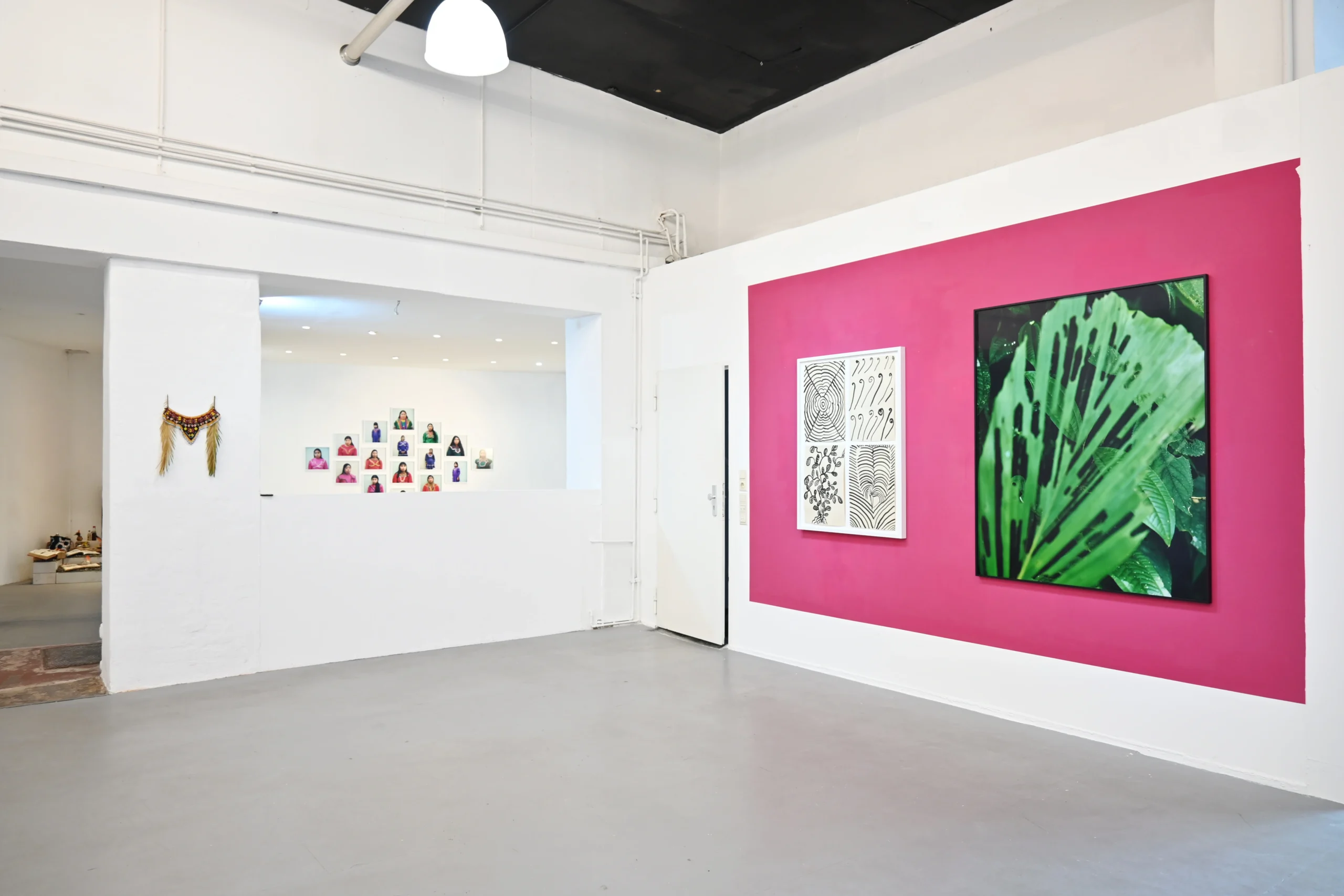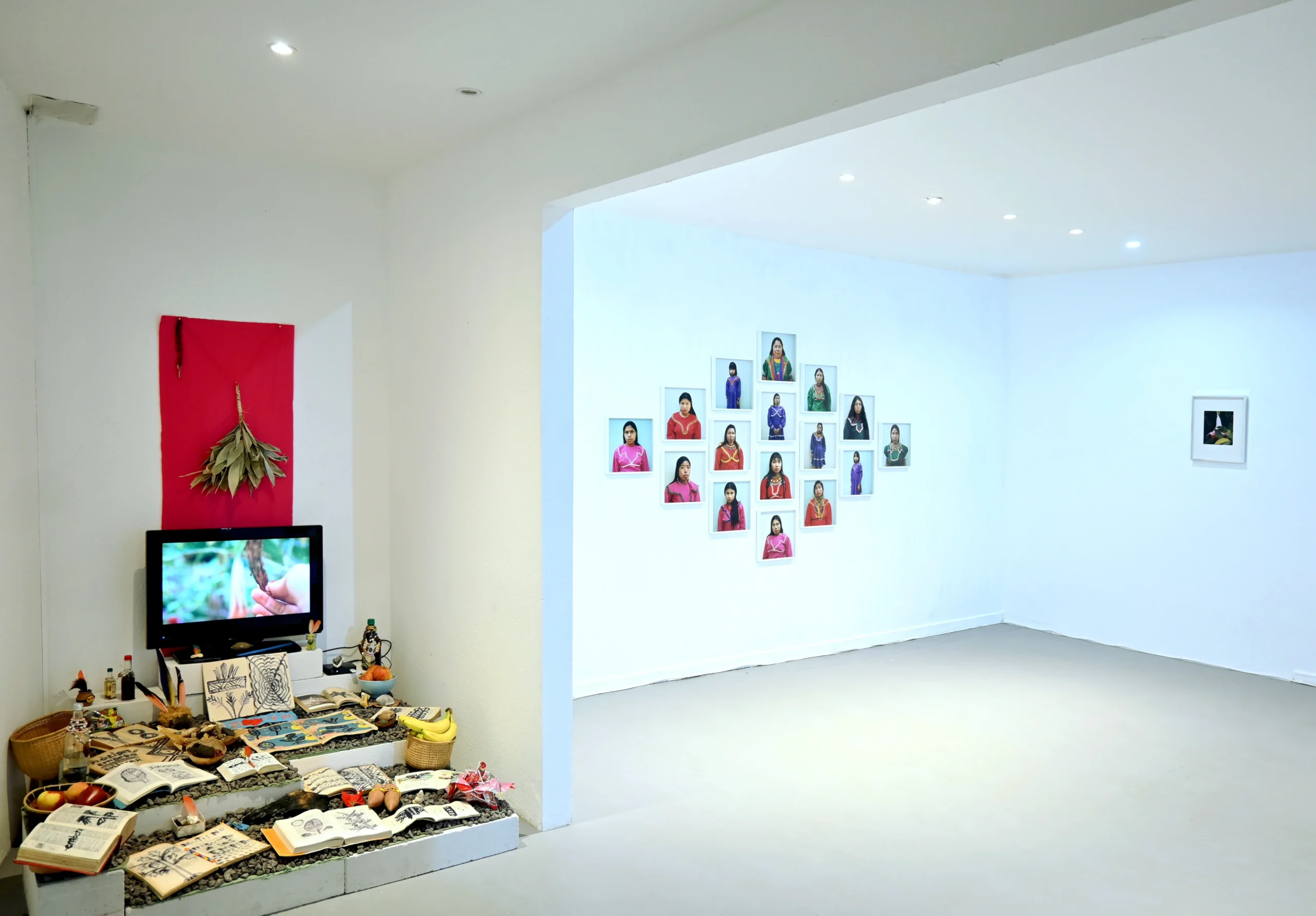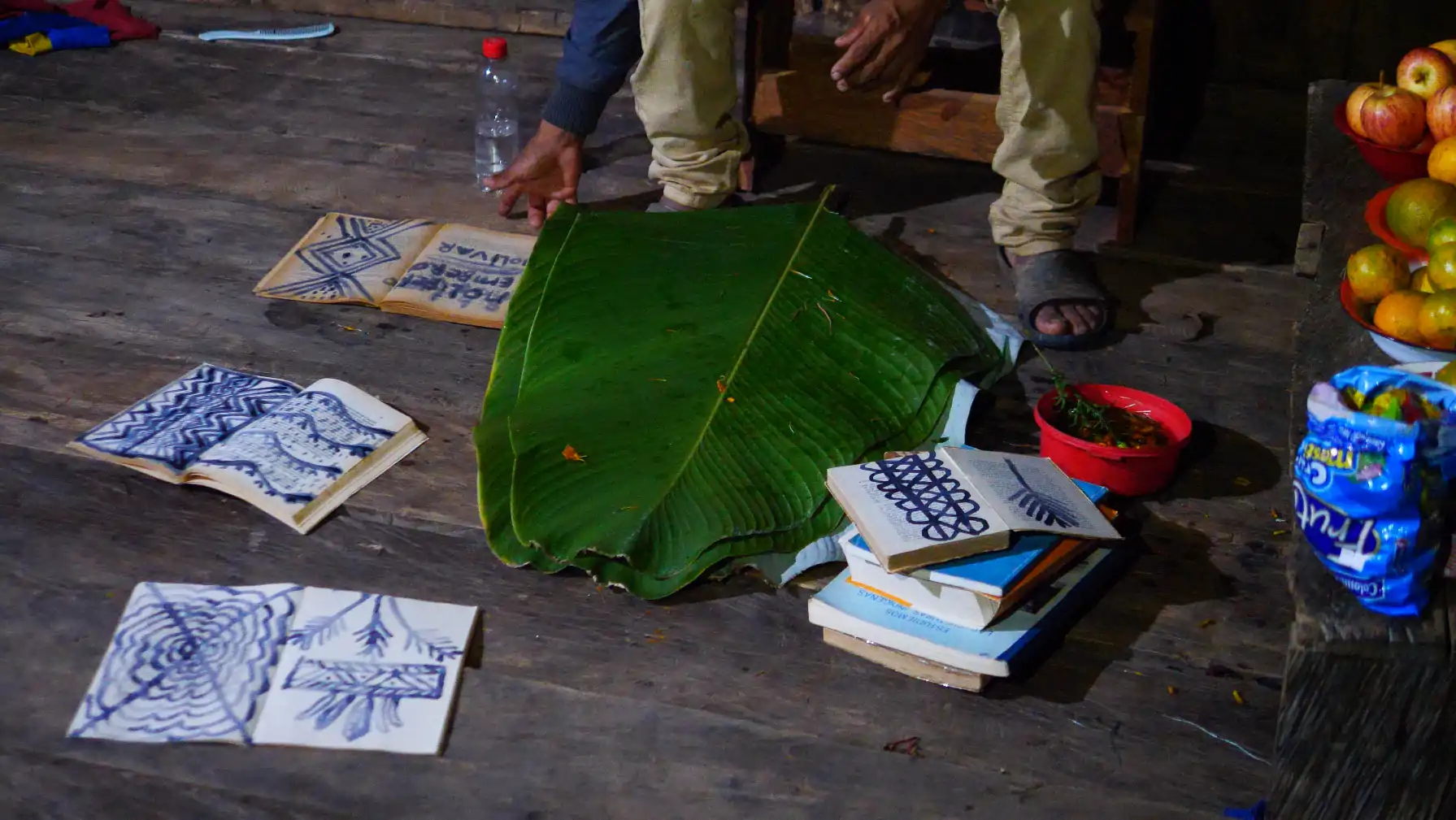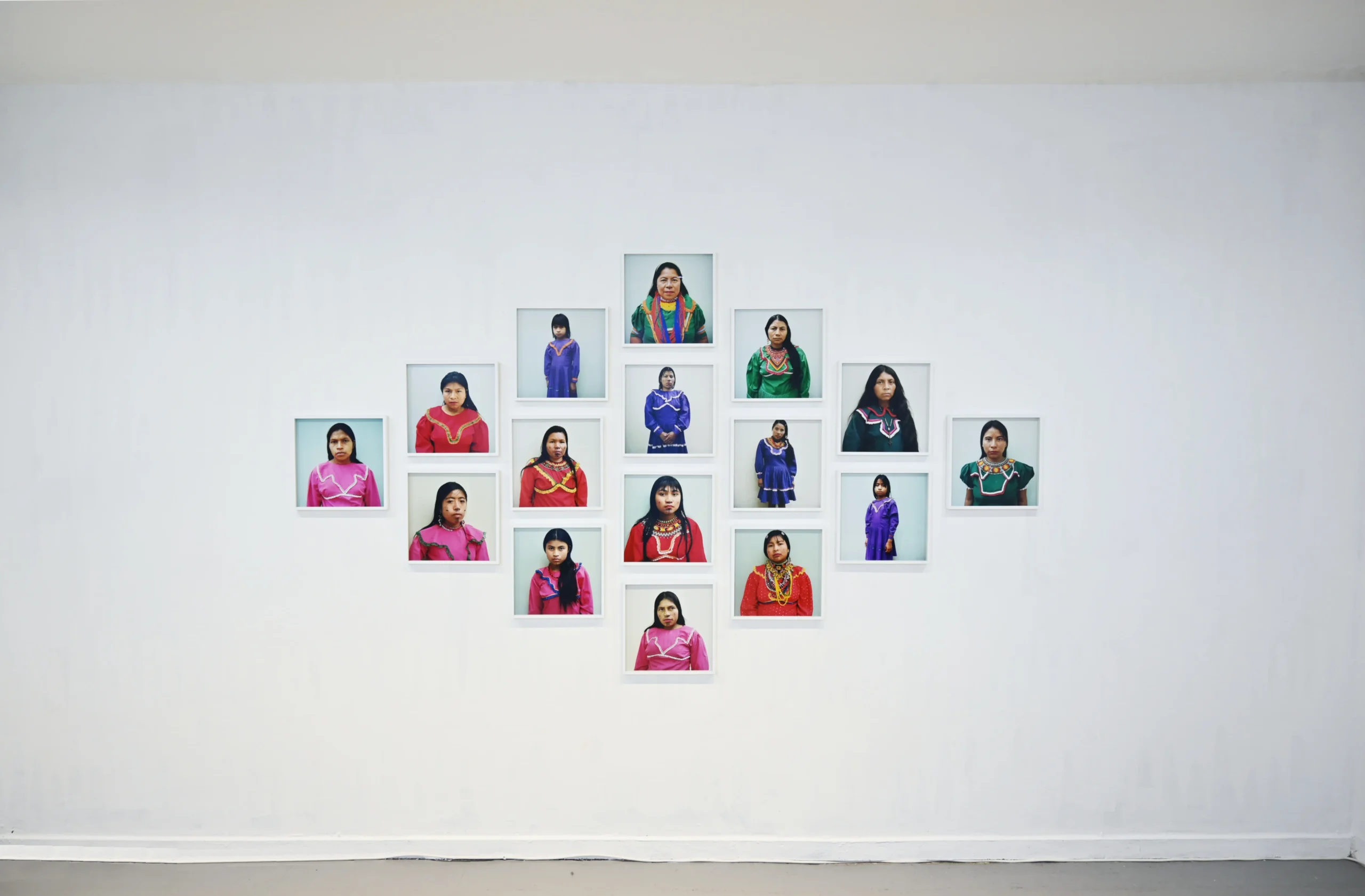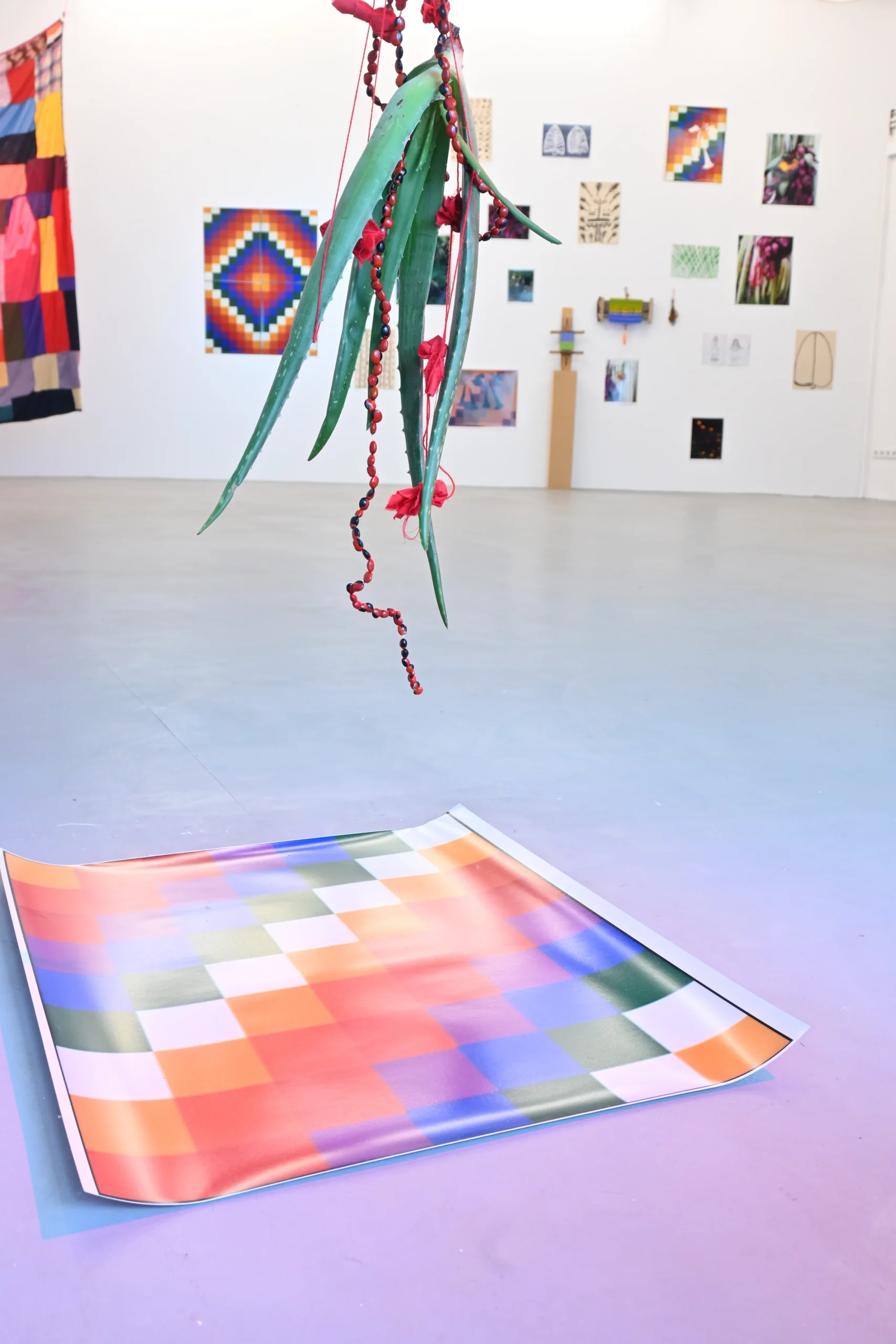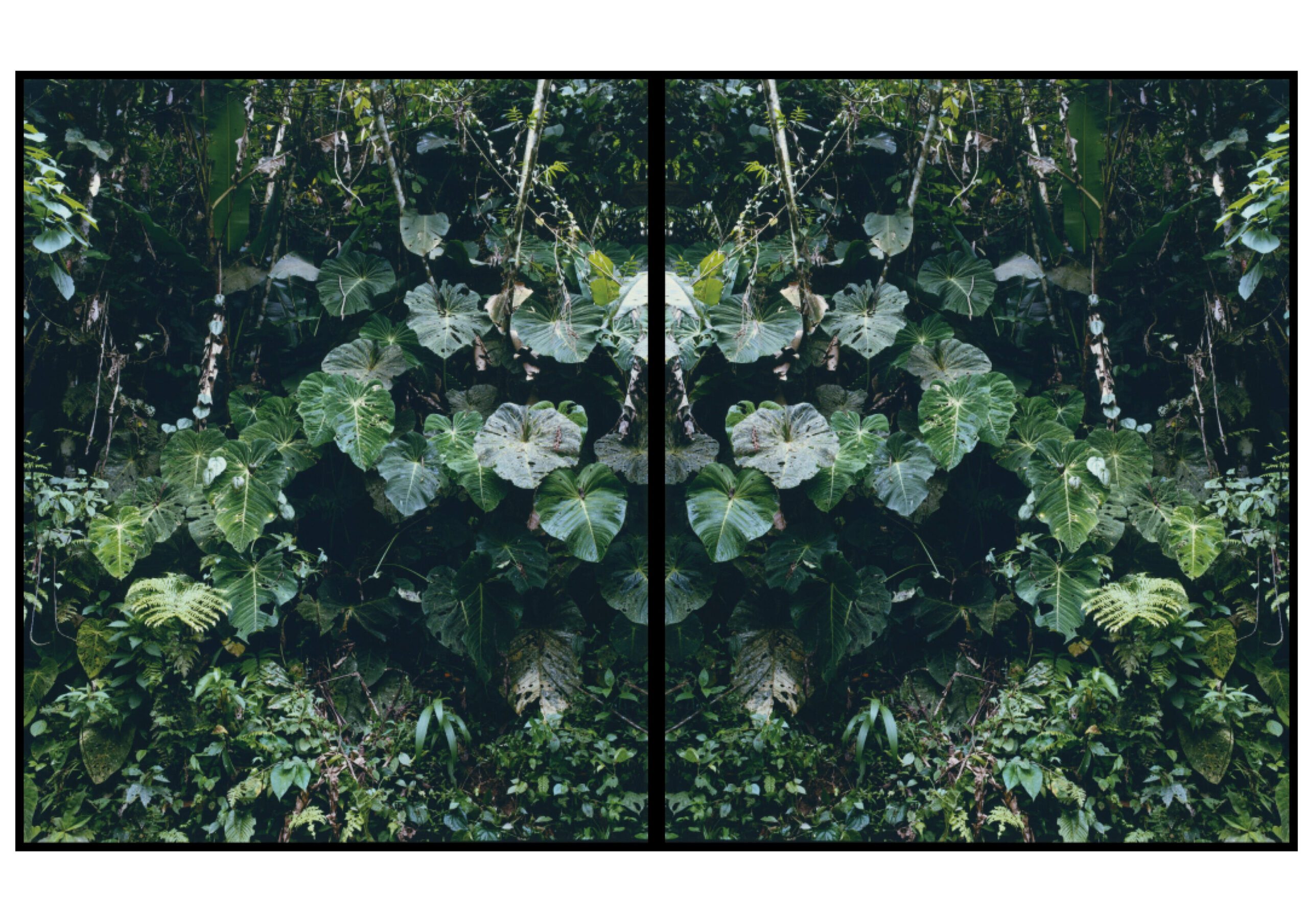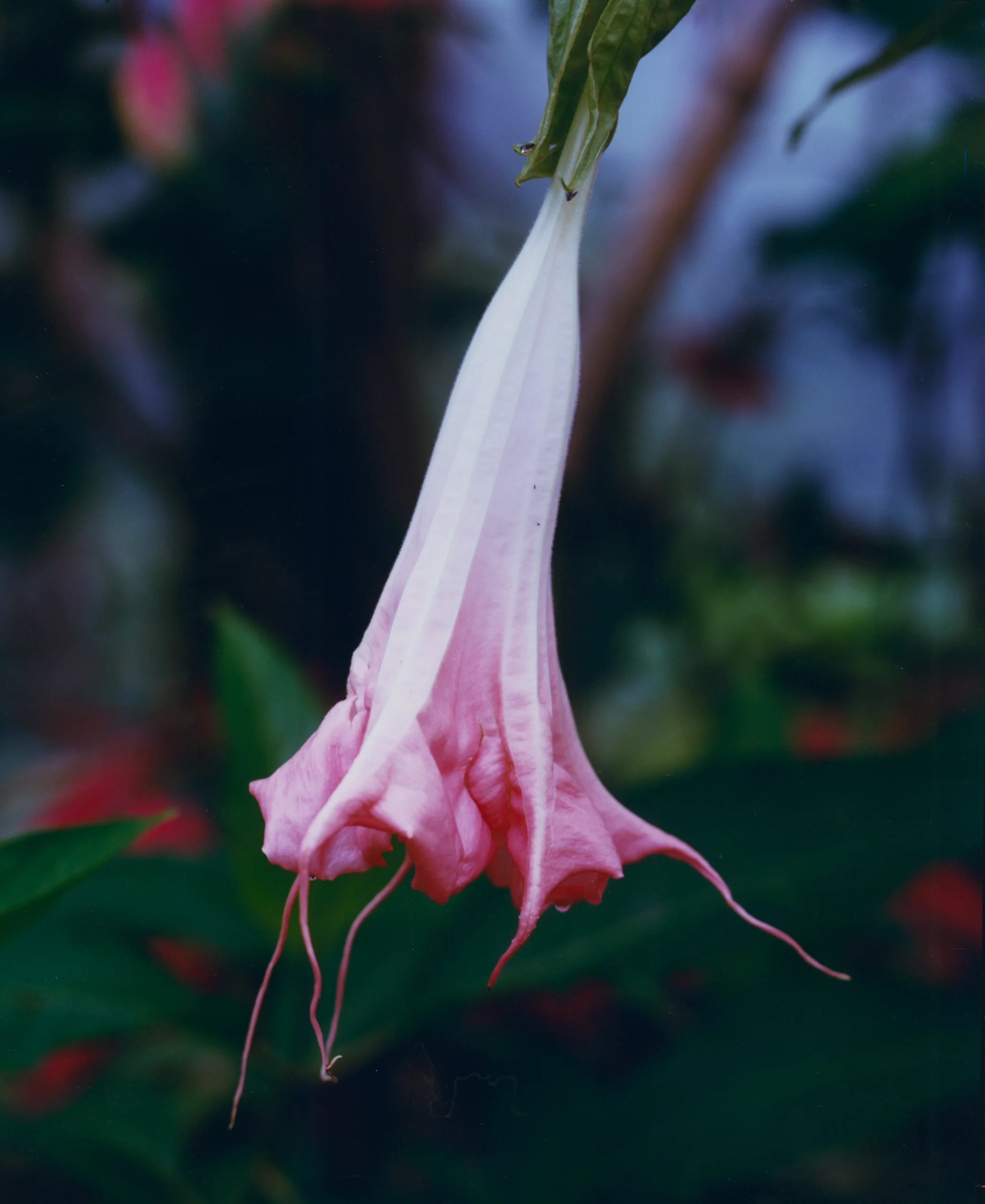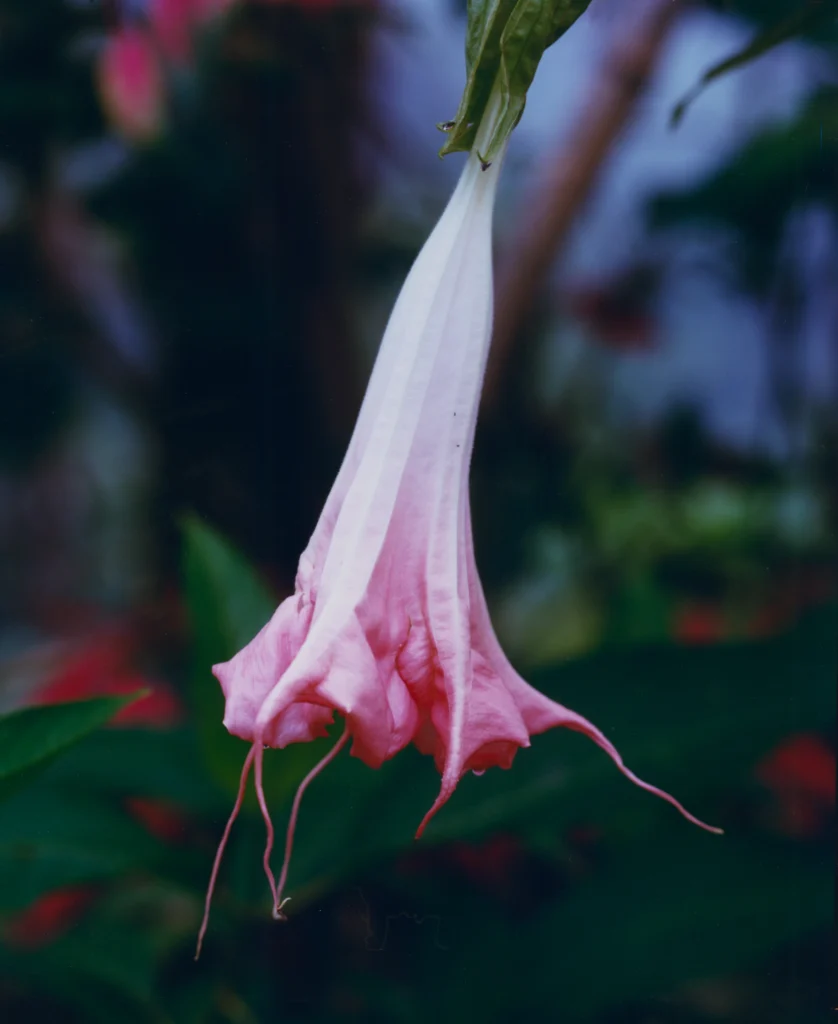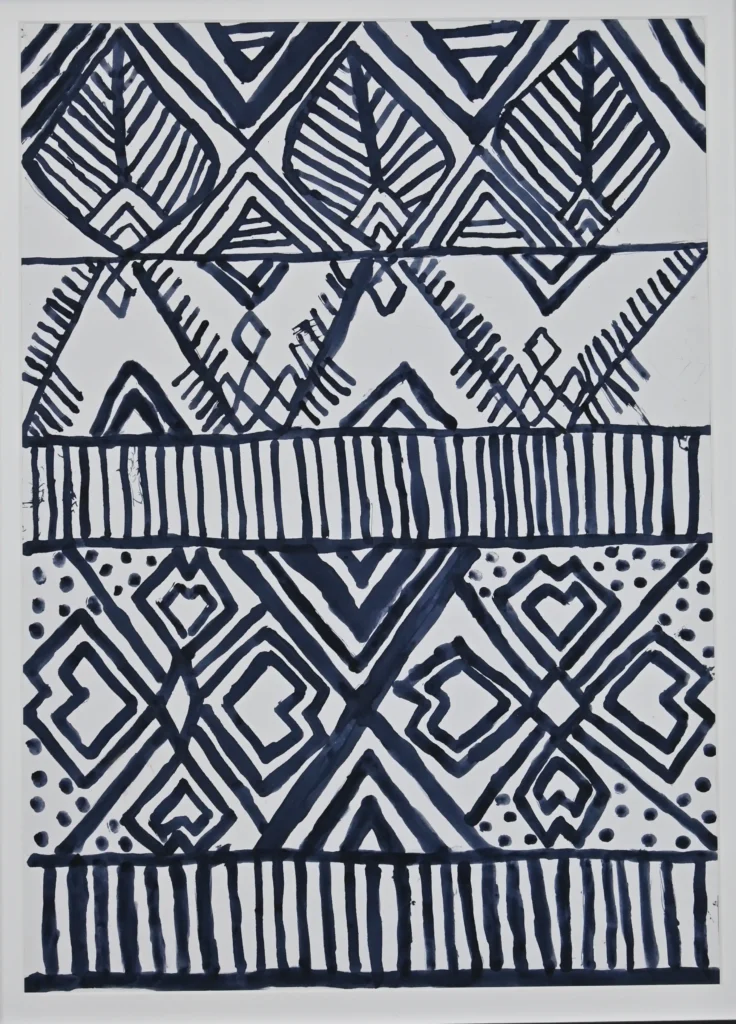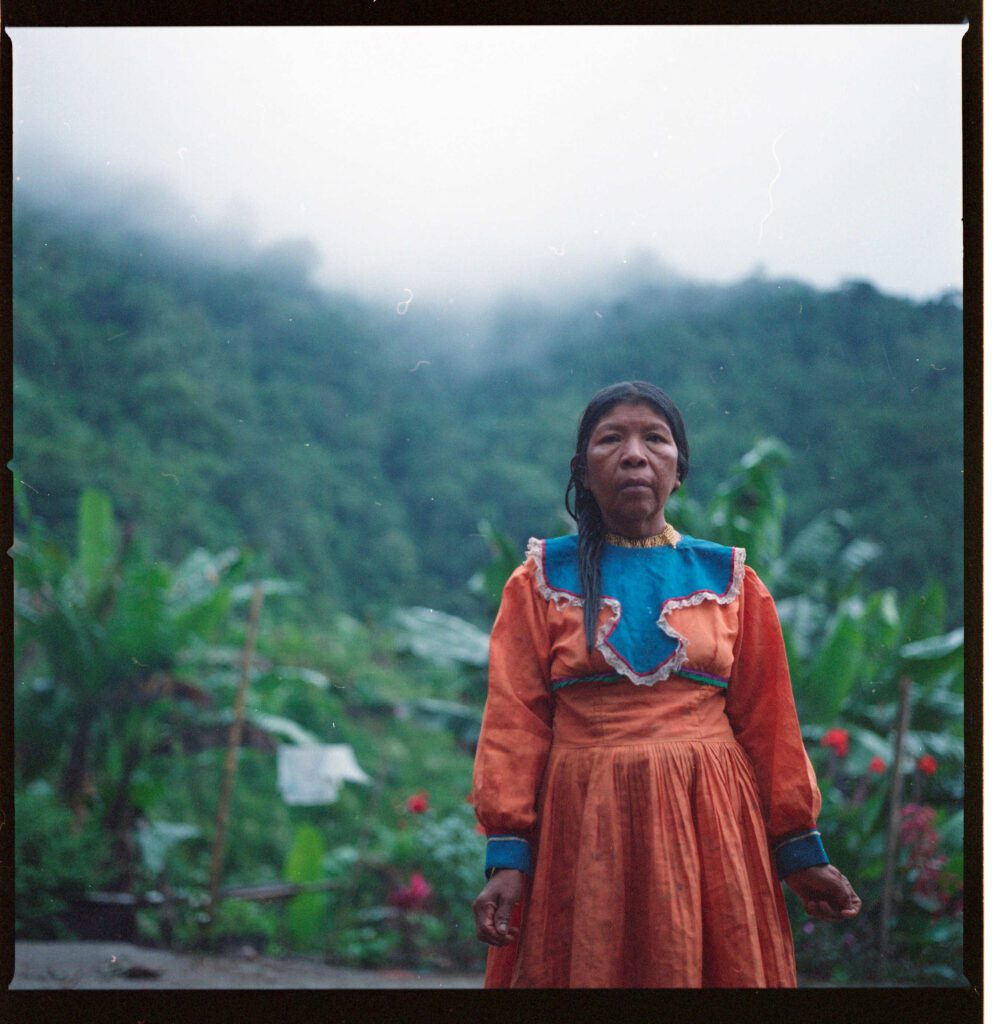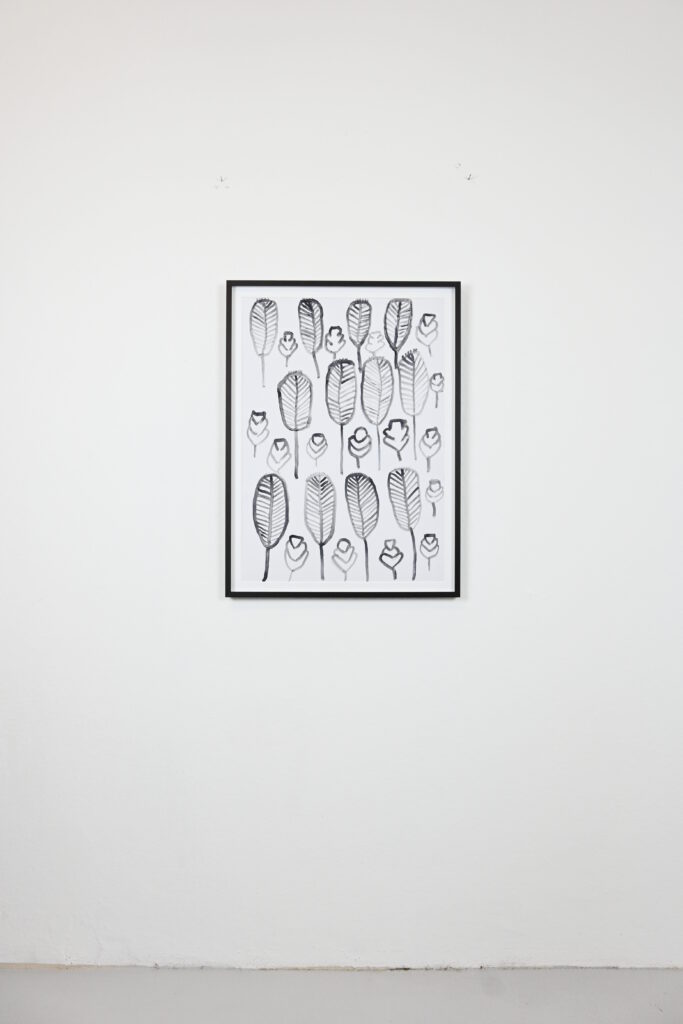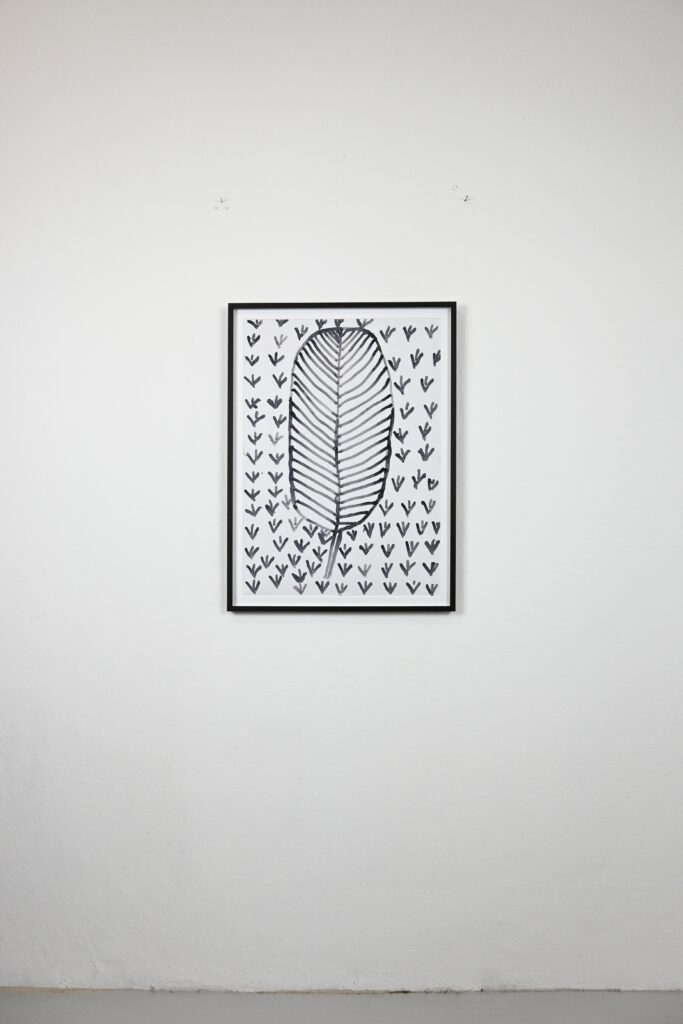KIMA: Karen P. Biswell
Embera for “union/love” Karen Paulina Biswell & Maria Amilbia Siagama Siagama.
May 13th – June 19th 2022
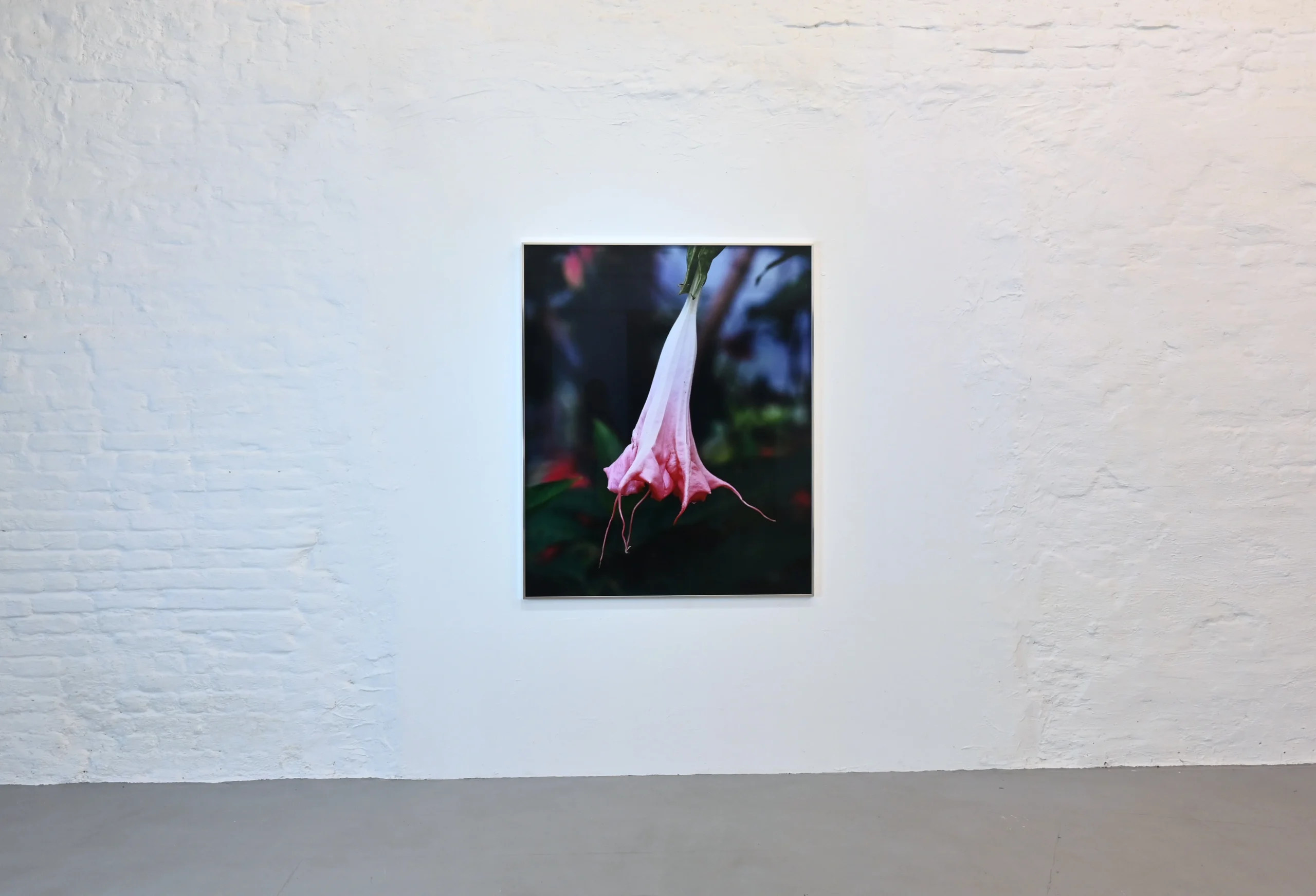
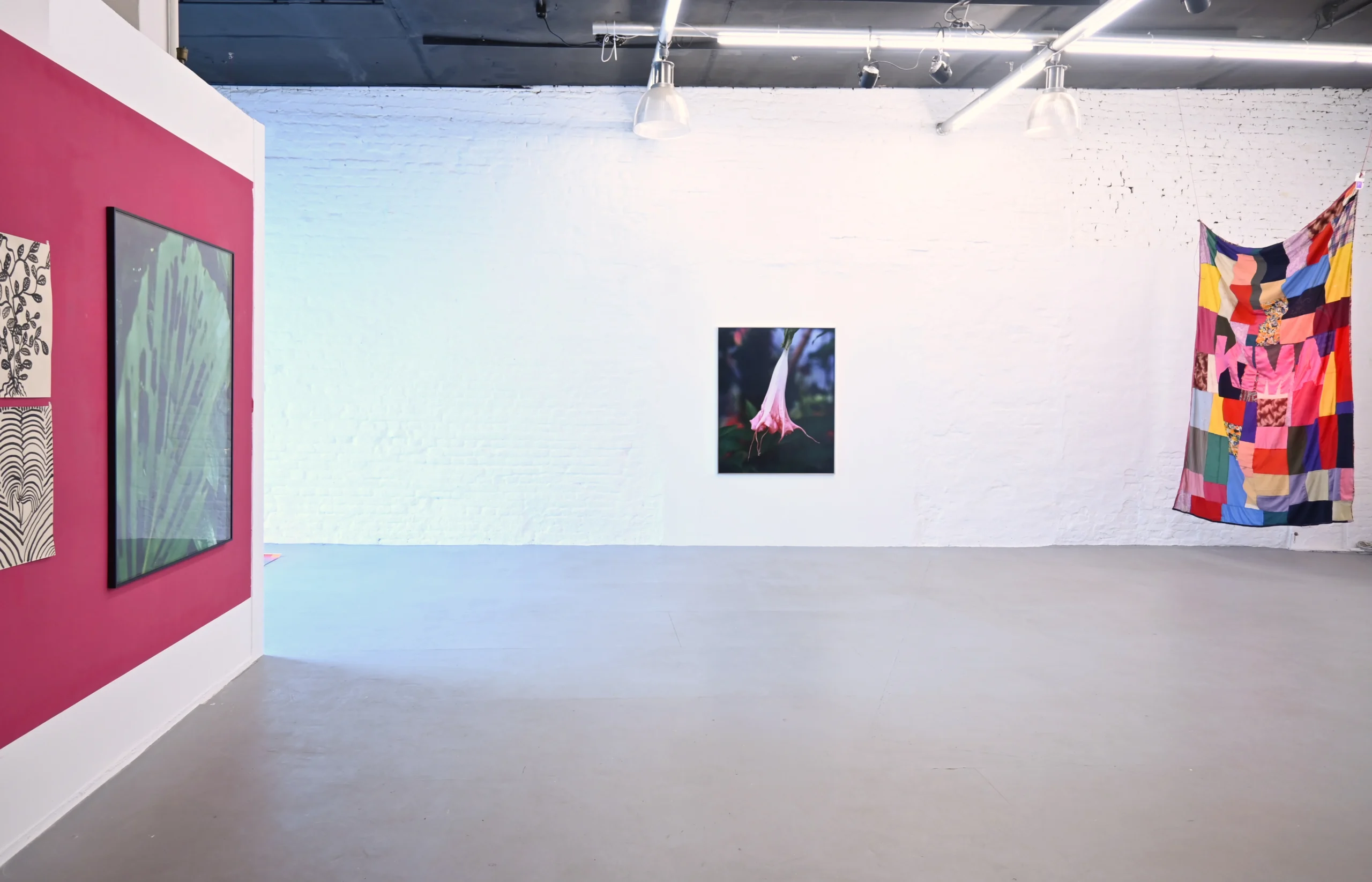
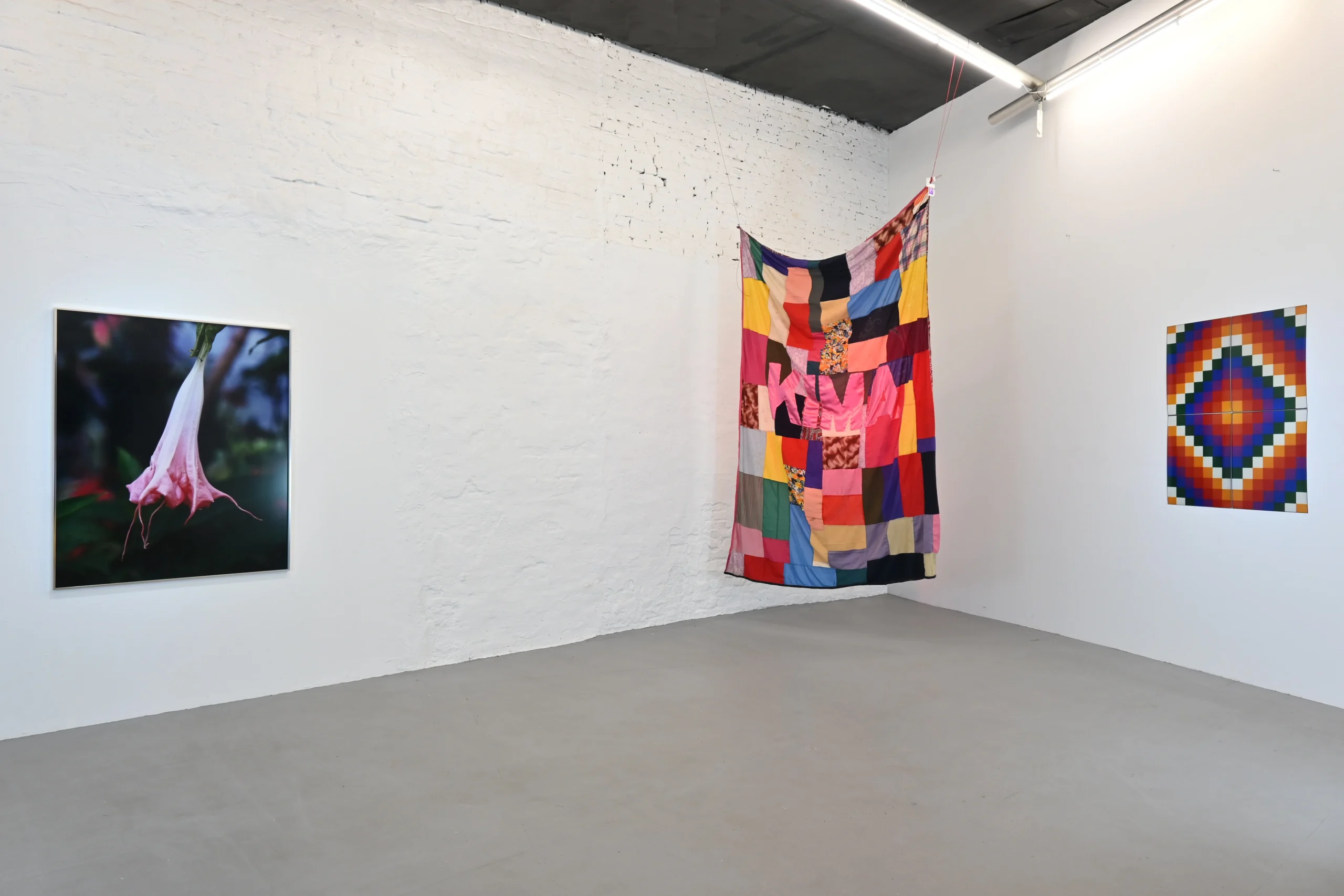
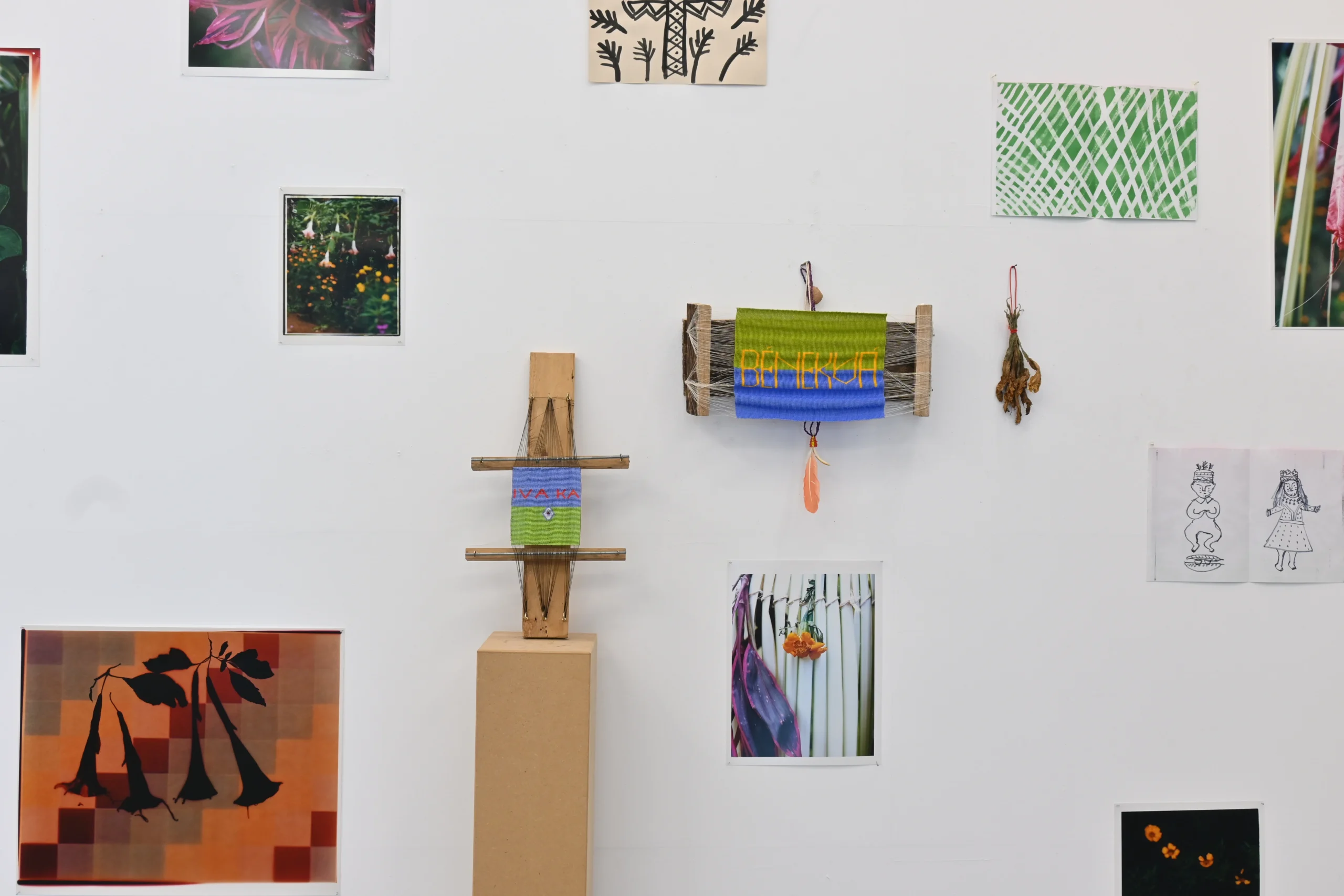
Kima in the Emberá language means union. Karen Paulina Biswell and Maria Amilbia Siagama Siagama’s first exhibition in Germany is an invitation to a journey to the mountains of Risaralda, Colombia, where Maria Amilbia lives with her family. The French-Colombian photographer Karen, who has worked with the Embera for more than 14 years, and the family’s grandmother, together, have recreated this fiction in which the two worlds, the Western world meets the world of the Embera.
The center of this journey revolves around the Iguaka or datura flower. A herbaceous plant that is highly toxic due to its alkaloid content, which gives it the common name of borrachero. Ibuaka, ivaka, iuaka or iguaka is also found in the Embera reservation in Risaralda. There, its uses are sacred: The Jaibanas, somewhat similar to a shaman, predict that they can “see” through this plant and establish contact with the spirits, looking for causes of illnesses or possible treatments to cure.
Kima explores the possibilities of seeing and vision: Photography is a vehicle between the two worlds. The world of the spirits and the real world, the world of the Emberas and our world, the world of the underworld, and the world of heaven. A world that has been built looking upwards and another that has been built looking downwards. Two large-format photographs, Iguaka and Inframundo, masterfully printed in Diamantino’s workshop in Paris, invite the traveller to enter a new world.
Karen’s artistic practice is consistent with the technical properties of the analog photography. In this exhibition she has expanded her experimentation with the production of photograms and a 16 mm film (digitally transferred). The former reduplicates the chakana, the seven colored emblem used of Andean people that consolidates the relationship between people, both politically and spiritually. By placing Iguaka flowers and tobacco’s the surface of a light-sensitive material, the photograms point out the magic power of the plants, meanwhile creates a simile with the magic that inhabits photography. The work in the darkroom that uses the light to create images.
The film in 16 mm, digital transfer, relates the ritual of the Jaibana in a state of trance, atoning for the history of oppression and exclusion that the indigenous peoples have suffered. In specially, during the independence wars against Spain. The books that have consolidated this history are intervened by Maria Amilbia. Her drawings are a decolonizer’s gesture, which in union with the voice of the Jaibaná express the freedom of the Emberá, the uses of another language away from the written word in books. It is a language striving to find the magic.
Maria Amilbia’s drawings are synthetic and pure abstractions of the plant and animal world and its spiritual effects. Her drawings on paper began in 2015, in the constant exchange with Karen, who invites Maria Amilbia to enter the world of art: her talent to synthesize complex constructions in few and fluid strokes, moved by the honesty while teaching the infinite possibilities of another look that understands the transactions with the non-human entities that surround us.
Kima houses an altar built with personal elements of the Embera family and Karen. Powerful healing to let us miss and “see” again, with the 16mm film shown on a screen that join the altar and give form to this union of plants and images, rituals and affections, sorceresses and bewitched, allies and artists in creative power and production of difference. Here lies the characteristic of this project, the union of Karen and Maria Amilbia.
The exhibition revisits as well, the contemporary approach within the latinamerican art to the indigenous communities: The photo installation, Jepa, 16 portraits of the Emberá women, is a seminal work within the Latinamerican art. Created 2015, after spending a lot of time with the community, Karen and the women together choose how to be depicted. Facing the increasing racism in the large metropolitan cities, they decided to emphasis on the dresses, jewelery and body painting, constitutive of the Embera identity, therefore, constructing a new way of depiction, away from the ethnological perspective towards a communitary and constructed view on themselves in communication with the artist.
Maria Amilbia Siagama Siagama is a woman of wisdom belonging to the Embera people. She holds the tradition of body painting with a natural ink made of the roots of Jagua (Kipira in Embera), which is being used in rituals, and as a form of communication. Her work brings together the necessary iconography to represent the visible and invisible universe. Her drawings made with ink and Jagua and are sacred forms that make up the vocabulary that nature uses to manifest itself through dreams, poetry and in biology. In her community, she celebrates the rite of birth. Her hands are in charge of bringing babies to this reality and in her way of seeing the world, midwifery is a major art.
Maria Amilbia Siagama Siagama. Photo by Karen Paulina Biswell. 2013
